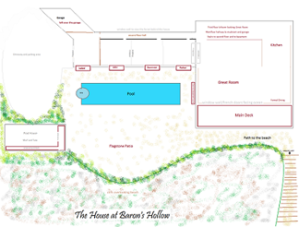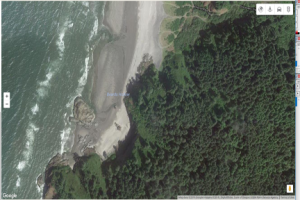 Once again I am mapping a novel. This one will most likely top out at 80,000 words in the first draft and settle back to about 75,000 by the third draft. Right now I am writing the high points of this story as a rough draft.
Once again I am mapping a novel. This one will most likely top out at 80,000 words in the first draft and settle back to about 75,000 by the third draft. Right now I am writing the high points of this story as a rough draft.
However, to do this right, I need to put together the background and research the most up to date maps.
This piece is a contemporary novel and is set in a place that really exists: the area of Cape Disappointment on the south coast of Washington State. It is a place I visited many times as a child, and have fond memories of. This also gives my hubby and me the opportunity to revisit the place to see how it has changed and to better set the scene in my mind.
As I am writing, I will, of course, avail myself of Google Earth. This is a great tool for anyone whose work is set in the real world. Urban fantasies, contemporary literary novels (which is what this particular book is) and any number of romance or mystery stories benefit from the author’s diligence in making the background scenery as realistic as is possible. Google Earth give you a recent real-time view of many places.
Just as if you were writing a fantasy, making the setting as real as possible is critical. When writing any tale set in a real city or place, the author needs to know the general lay of the land, even if the setting is rarely mentioned. Remember, every time the protagonist and his/her companions leave the house, they will be in an environment that should be known and recognizable to the reader. Your knowledge of place will be clear in your writing, with every casual mention.
 I have drawn the floor plan of the house where much of the action takes place, and also the cove, along with the beach. The weather will keep them indoors a great deal of the time, and while it’s a large house, these people are a volatile mix, with many secrets that emerge over the course of the novel.
I have drawn the floor plan of the house where much of the action takes place, and also the cove, along with the beach. The weather will keep them indoors a great deal of the time, and while it’s a large house, these people are a volatile mix, with many secrets that emerge over the course of the novel.
The floor plan and map of the pool area is critical, as some overheard conversations must take place in an area where the inadvertent listener can remain unseen. The beach itself is a known quantity, and the places people can find privacy in the dunes are all available via the Google Earth satellites.
The towns they will be going to for entertainment are also well-known to Washington residents, and while the names of the restaurant or bar will be my own creation, the street address will have its roots in reality. I will do this, despite the fact these are the sorts of things that never get mentioned. This is to make it real to me.
The biggest research issue for me with this novel will be learning about extreme sports, such as storm surfing and rock climbing. I know about surfing, as an interested bystander, but I am reading articles and threads on extreme sports enthusiast sites, to get an idea of the mindset of people who do these kinds of sports. When I began searching these sites, I wanted to know what the people who surf the Northeastern Pacific during storms consider too hazardous to attempt, and what they are really looking for.
The following is a link to a YouTube video of the kind of surf my two risk-takers would love to surf, but as this story takes place during the summer, the storms will be less severe than what this little clip shows. The beach, the cliffs, and the house will be the main scenes of the action.
Whether I am writing fantasy or general fiction, my goal is to have the background scenery and setting as unobtrusive as possible. I want the reader to see it in their mind, which they will if I visualize it clearly and give them just enough imagery to hang their imagination on. The reader’s ability to imagine the setting is as important as what I believe the setting to be, so I must be careful to never contradict myself, or the reader will be confused.


![By Adbar (Own work) [CC BY-SA 3.0 (http://creativecommons.org/licenses/by-sa/3.0)], via Wikimedia Commons 413px-cape_disappointment_and_cape_disappointment_light](https://conniejjasperson.com/wp-content/uploads/2016/12/413px-cape_disappointment_and_cape_disappointment_light.jpg?w=500)







In my youth I spent hours and days and weeks creating highly detailed maps of realms and floor plans of fabulous castles (with hidden doors and passages) yet those skills (and much time) has fallen away to nothing. Making the “work documents” was almost more fun than starting to write the story. I did finish the maps eventually but not always the novel. Then, in my haughtier days, I finished the novel with the maps and floor plans only in my head and crave the map skills I once had. You just never can win!
LikeLiked by 2 people
P.S. On Pinterest, there are plenty of elaborate floor plans of fabulous mansions that could easily double as palaces.
LikeLiked by 2 people
I love that you’re doing a contemporary novel. Will it have a mystery to solve?
LikeLiked by 1 person
Yes, it will indeed!
LikeLiked by 1 person